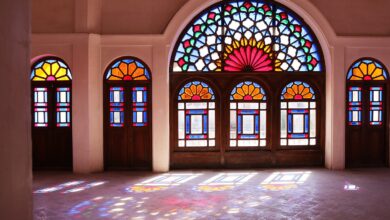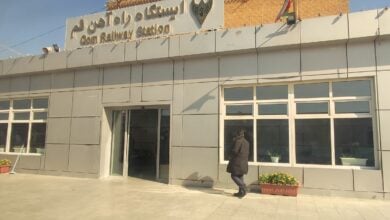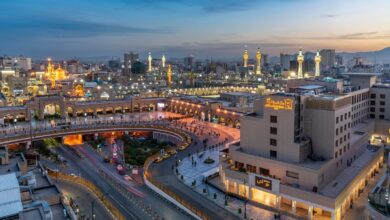
Hamadan is a province located in the western part of Iran, renowned for its rich history. Often referred to as the Capital of History and Civilization in Iran, Hamadan (Ecbatana) becomes a popular destination, particularly during the Nowruz holidays and the first half of the year. Surrounded by provinces like Zanjan, Qazvin, Markazi, Kurdistan, Kermanshah, and Lorestan, Hamadan boasts unique historical and natural attractions, hospitable locals, and beautiful handicrafts.
These reasons make tourists purchase Hamadan flight tickets for summer and Nowruz vacations. If you are planning a trip to Hamadan, this guide provides all the necessary information before and during your visit. Stay with us.
Contents
A Brief Overview of Hamadan’s History
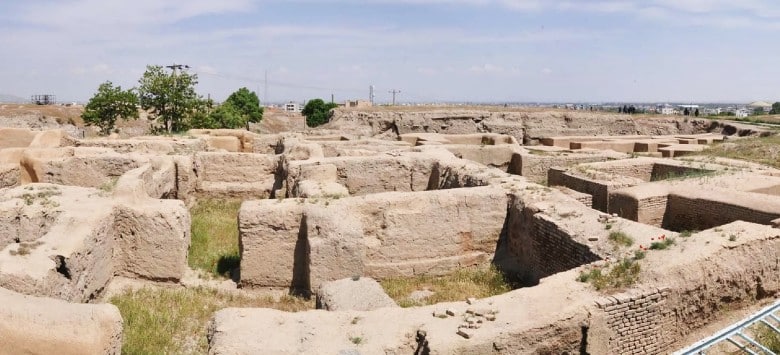
For thousands of years, Hamadan has been inhabited by Iranian tribes due to its geographical location and favorable climate. Archaeological findings from the Gian Hill in Nahavand date back at least 6,000 years. A tribe known as the Kassites lived in this region centuries ago. According to historical relics, the civilization of Hamadan dates back to at least the third millennium BCE.
Hamadan is widely known as the land of the Medes Kingdom. Based on the writings of Herodotus, a renowned historian, the Medes rose to power in the late 8th century BCE under the leadership of Deioces, the first king of the Medes, who chose Hamadan as the capital of his empire. This capital, known as “Ecbatana,” still bears its historical significance. Remnants of the city and the castle of Deioces can be seen today at the Hegmataneh Hill.
During the Achaemenid Empire, Hamadan was a thriving city, serving as the summer capital of the Achaemenid kings. The remains from this era underscore the city’s importance at that time.
Hamadan suffered significant destruction during Alexander’s invasion of Persia, with many of its villages destroyed. In the subsequent Parthian and Sassanid periods, Hamadan continued to hold great importance. The Islamic era history of Hamadan experienced many ups and downs, from bloody battles during the early Islamic conquests to the Iran-Iraq War of the 1980s.
Weather and the Best Time to Visit Hamadan
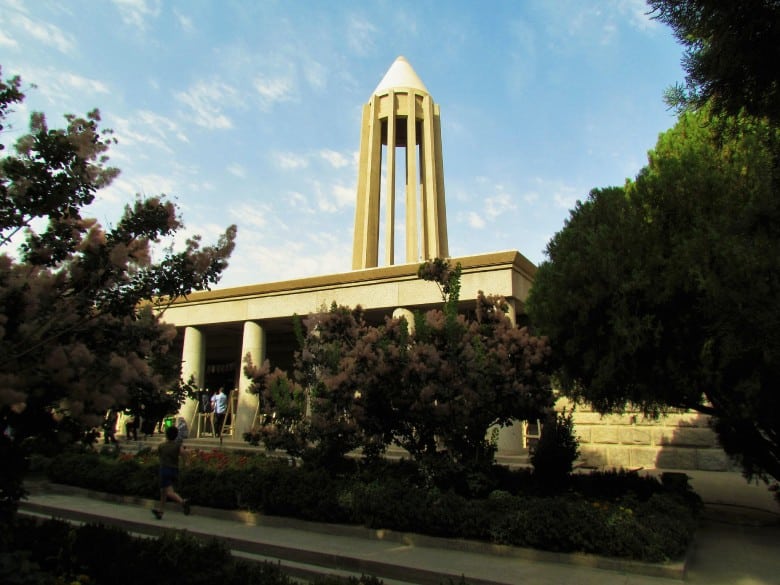
Given Hamadan‘s mountainous location, the province experiences cold and windy winters. However, during the hot months, such as July and August, the weather is relatively cool and pleasant, sometimes reaching up to 36°C. To experience the best weather in Hamadan, we recommend buying cheap Hamadan flight tickets in spring and summer, particularly from mid-May to the end of September.
Top Attractions and Places to Visit in Hamadan
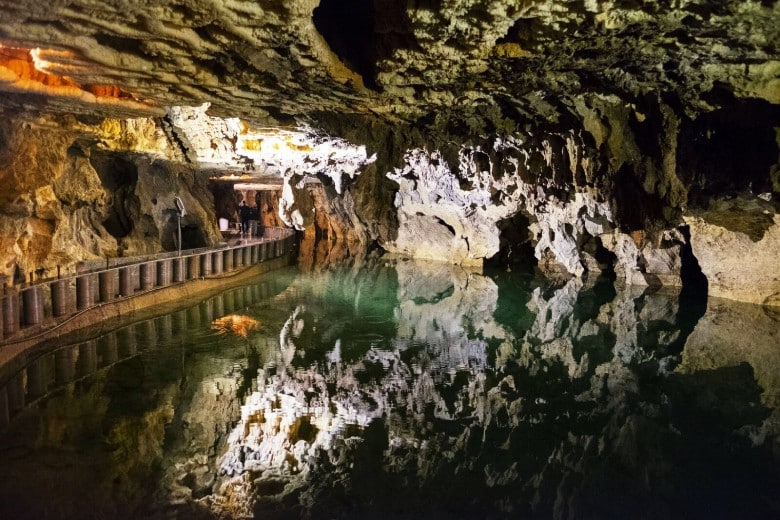
Hamadan’s natural and historical attractions are so captivating that time seems to stand still while visiting them. One of the most famous attractions in Hamadan is the Ali Sadr Cave.
After the Ali Sadr Cave, the Ganjnameh Tourism Village is located 5 kilometers west of Hamadan, hosting several tourist attractions. The cool mountain air in the Farahzad Valley and the breathtaking views of the Mishan Plain attract both local and foreign tourists. Even in spring, you might find snowy mountains in the Ganjnameh Tourism Village.
Tourists enjoy snowball fights, skiing, savoring Ash Doogh (a local soup), and the refreshing Ganjnameh Waterfall. The village’s attractions include the Ganjnameh Inscriptions, Ganjnameh Waterfall, and Ganjnameh Cable Car. It also offers many recreational and welfare facilities such as cafes, restaurants, restrooms, ski slopes, bowling alleys, bungee jumping platforms, zip lines, trials tracks, rock climbing, aerial balancing, and sledding tracks.
Other notable natural attractions in Hamadan include the Ekbatana Dam Lake, located 11 kilometers east of Hamadan, which features greenery, restaurants, guesthouses, boating, and water skiing, ideal for a memorable day trip. Another beautiful natural site is the Gian Spring, located 30 kilometers south of Nahavand, surrounded by ancient plane trees, often referred to as a lost paradise. A historical hill with thousands of years of history is also situated 2 kilometers from the Gian Spring, where many artifacts have been discovered. “Gian” is a Kurdish word meaning “life,” which is why it is called the “Spring of Life” or “Gian Spring.” Visitors can set up tents on the concrete platforms above the spring to relax.
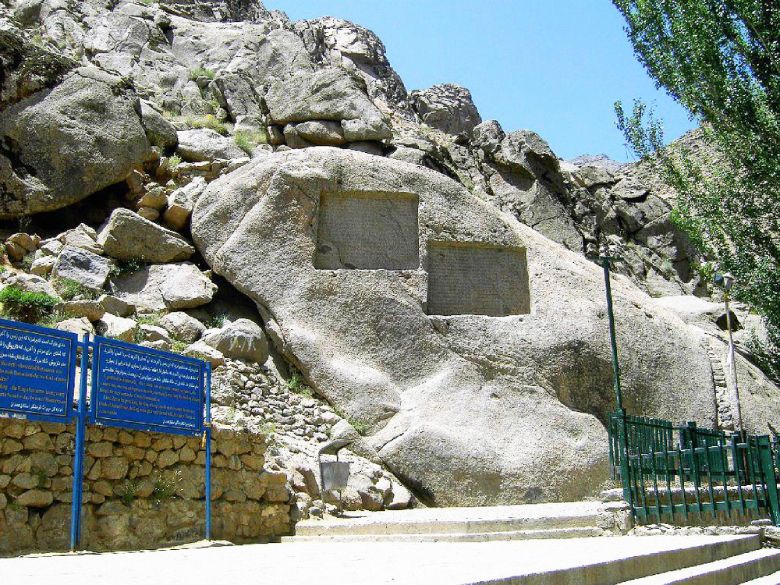
Not visiting the famous and valuable tombs in Hamadan would be a great disservice to both yourself and Hamadan. The Tomb of Baba Taher Oryan, an Iranian poet and quatrain composer of the late 4th and early 5th centuries, and the Tomb of Avicenna, a world-renowned Iranian physician, poet, and philosopher, are among the most valuable and important attractions in Hamadan.
Other historical and cultural attractions in Hamadan include Hegmataneh Hill, Hegmataneh Museum, Hamadan Traditional Bazaar, Mausoleum of Esther and Mordechai, Alavian Dome, Ghorban Tower, Ghaleh Bath and Museum (Hamadan Anthropology Museum), Museum of Celebrities and Prominent Figures of Hamadan, Murad Beyk Valley in the south of Hamadan, Nazari Garden Museum, Noushijan Hill, Stone Lion Statue, Goorab (Jorab) Hill, Lutfalian Historic House, the famous and old People’s Park, Saman Underground City, Golshan Caravanserai, the Tomb of Habakkuk in Tuyserkan, and Mir Fattah Icehouse, which are particularly popular among tourists interested in history and architecture.
How to Travel to Hamadan
This section of the Hamadan travel guide examines the transportation options to Hamadan. You can travel to Hamadan by airplane, intercity buses, train, and private car.
By Airplane
Many travelers prefer to buy plane tickets for convenience and to save time. Hamadan Airport is located 5 kilometers from the city. At least two daily flights operate from Tehran to Hamadan. Airlines such as Aseman, Iran Air, and Mahan operate flights to and from Hamadan. Flights are available on routes from Shiraz, Tabriz, Tehran, Ahvaz, Bandar Abbas, and Hamadan.
By Bus
Another common mode of travel is by bus. Hamadan has three bus terminals:
- The largest Hamadan Bus Terminal is located in Ashura Square and offers services to all parts of the country.
- Ekbatana Terminal, located on Ekbatana Street, provides intercity services.
- White-Blue Terminal, located on Badi’-ul-Zaman Hamadani Boulevard, offers in-city services.
By Train
Passengers who prefer to travel by train can disembark at the Malayer Railway Station and continue to other areas from there. Malayer Station is the only railway station in Hamadan province, with trains running to and from Tehran every two days.
By Private Car
For those traveling by private car, if departing from Tehran, the best route to Hamadan is via the Tehran-Saveh and Saveh-Hamadan roads. Other suggested routes include the Qazvin-Hamadan and Bu’in Zahra roads. Generally, the busiest entry routes to Hamadan are the northern entry routes such as Saveh-Hamadan and Zanjan-Hamadan.
Public Transportation in Hamadan
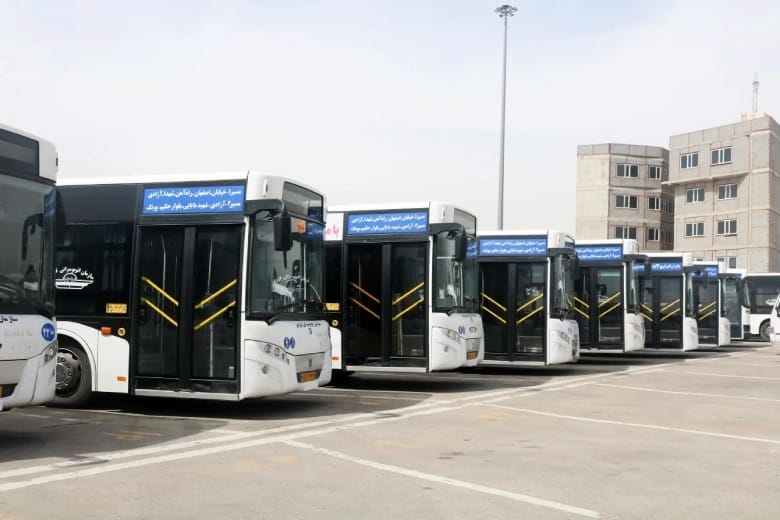
Hamadan does not experience heavy traffic like Tehran, and there is no odd-even traffic scheme. After spending some time in Hamadan, you’ll notice the unique layout of its streets. Unlike other cities, Hamadan’s streets are circular and radiate toward the city center, reminiscent of the ancient city’s design with seven concentric fortresses. For getting around Hamadan, you can use public transportation like buses and taxis. There is no metro system in Hamadan.
Buses
Hamadan’s bus system uses an electronic ticket system with 200 buses operating in the city. On average, 1,000 people use buses daily, and the waiting time for passengers is estimated to be around 20 minutes.
Taxis
There are both route-based and circulating taxis available for city travel. Taxi fares in Hamadan are relatively reasonable compared to Iran’s larger cities. The use of smart internet taxis has also become quite popular. If you don’t have internet access, you can call Hamadan’s radio taxis at numbers 1844, 1833, 1828, and 1820 (for women).
Hotels and Accommodation in Hamadan
BOOK ONLINE
Iran Hotels
When visiting Hamadan, you can book comfortable and reasonably priced hotels and accommodations. Various types of accommodations, including hotels, guesthouses, and private residences, are available in Hamadan to welcome travelers.
- Luxury Hotels in Hamadan: Some of the quality and beautiful hotels in Hamadan include the 4-star Bu Ali Hotel, Amiran International Hotel, and Parsian Hotel.
- Mid-Range Hotels in Hamadan: Among the 3-star hotels in Hamadan, you can choose Khatam Hotel Apartment, Varzesh Guesthouse Hotel, and Arian Hotel.
- Budget Hotels in Hamadan: The 2-star Ali Sadr Cave Tourism Hotel, Varkaneh Eco-Lodge, and Amaday Eco-Lodge are affordable accommodation options in Hamadan.
Restaurants and Fast Food in Hamadan
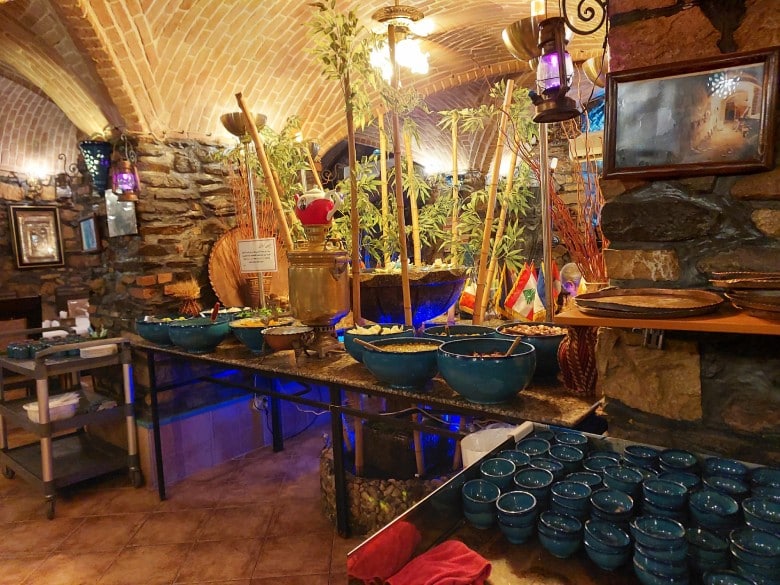
When you buy a Hamadan flight ticket, you can enjoy not only the beautiful landscapes and attractions but also delicious Iranian and local foods, as well as international cuisine. There are many restaurants in Hamadan where you can rest and enjoy tasty meals. If you love traditional and authentic food, make sure to visit Aryaeian Restaurant, also known as Dizi Sara Aryaeian, and enjoy a hearty lunch with local buttermilk.
For authentic Persian cuisine, you can dine at the Dariush Restaurant in the Ganjnameh area. The ambiance of this restaurant is very calm and pleasant, and they serve high-quality dishes.
If you crave Italian food while traveling, we recommend the Delzhin Italian Restaurant, located slightly below the Bu Ali Hotel. The restaurant serves a variety of delicious Italian pizzas and pasta.
Local Dishes of Hamadan
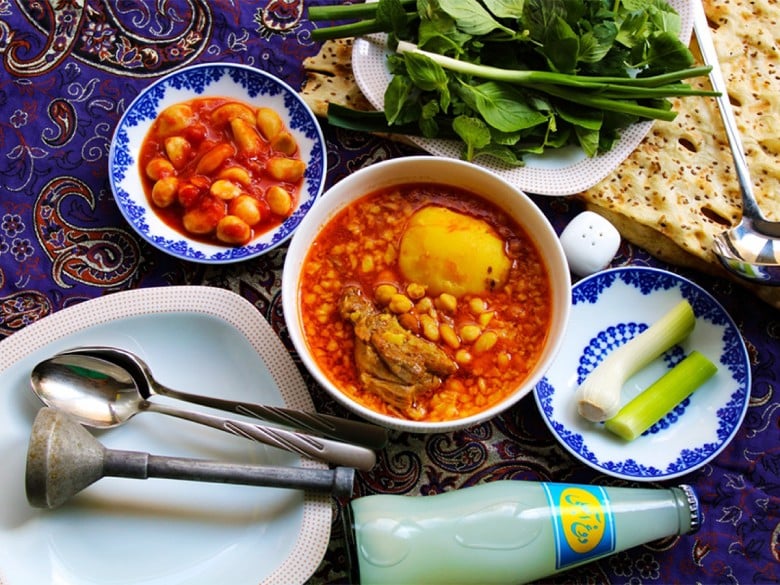
Now that we’re discussing food, it’s good to get acquainted with the local dishes of Hamadan, and be sure to try at least one during your visit. Some of the most famous local dishes of Hamadan include Hamadan’s Qorme Abgoosht, Ash-e Berenj, Ash-e Amaj, Eggplant Ash, Kachi Ash, Dried Fruit Ash, Kabab Sardashi, and Pepper Abgoosht. If you’re planning to buy a charter flight ticket, note down these delicious dishes and taste them in Hamadan.
Shopping Centers and Markets in Hamadan
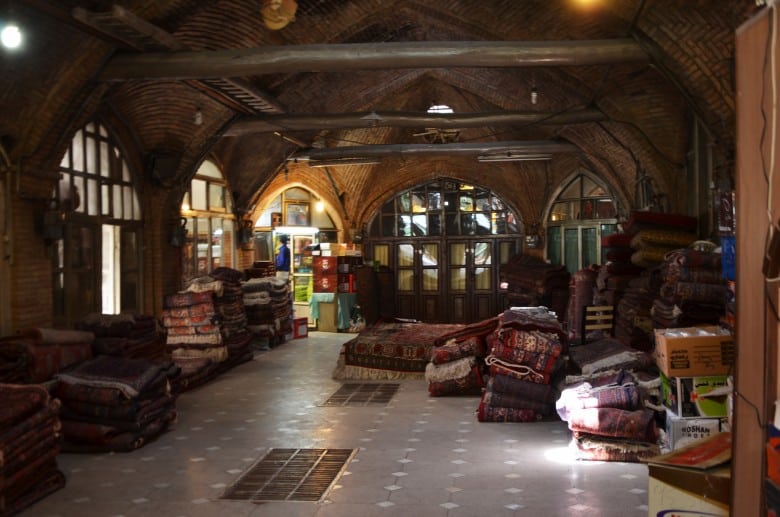
Shopping has always been one of the most enjoyable parts of any trip. During your visit to Hamadan, you can explore the markets and shopping centers. Some of the well-known markets and shopping centers in Hamadan include the Grand Bazaar of Hamadan, Zagros Tower, Mahestan Shopping Center, Qaem Passage, Pastor Tower, Kafash Khaneh Bazaar, Shahrara Shopping Center, and Khajeh Rashid Passage.
Souvenirs from Hamadan

Hamadan offers both delicious edible souvenirs and valuable handicrafts. Be sure to buy a souvenir as a memento for your loved ones and friends when visiting Hamadan. Edible souvenirs of Hamadan include honey, Komaj, Baslogh, Nan-e Chai, Angosht pich, rock candy, Rahat al-Holqum, Bersaq, and Halva Loz. Among the handicrafts of Hamadan that you can purchase as souvenirs are pottery, kilim, leather goods, carpets, wooden frames, Giveh shoes, and carved stones.
Traditional Ceremonies of Hamadan
In Hamadan, certain important and traditional ceremonies, like other cities in Iran, are celebrated in their unique ways.
Some of the traditional ceremonies of Hamadan include Nowruz, Kuseh and Zan Kuseh, Chaharshanbe Suri, Sizdah Be-Dar, New Year celebrations, Yalda Night (Cheleh Bozorg), Small Yalda Night (Cheleh Kuchak), Samanou cooking, Cherreh Gardan, traditional rain-making ceremonies such as Chamcheh Khatoon, Hashli, and Gavbar, religious ceremonies like chest-beating and Tazieh during Muharram, Ramadan ceremonies, Arafah Day ceremonies, wedding ceremonies including phases such as Khastegari, Baleh Boroon, Rakhteh Boroon, Henna Bandan, Groom’s Clothes, Akd Konan, Bride’s Wheel, Patekt, and Groom’s Salute, and Baby’s Seventh Night ceremonies.
Each traditional ceremony is conducted according to specific customs and principles and at designated times, with fascinating stories and narratives behind them.
Book Iran Flights
Buy Iran flight tickets at the lowest price
Explore Iran’s culture and history with affordable and reliable flight tickets.
General Information about Hamadan
- Hamadan Code: 81
- Flight Time from Tehran: Approximately 1 hour and 40 minutes
- Train Travel Time from Tehran: Approximately 2 hours (Rail distance from Tehran to Hamadan: 264 kilometers)
- Bus Travel Time from Tehran: Approximately 4 hours (Road distance from Tehran to Hamadan: 320 kilometers)
Hospitals and Medical Centers in Hamadan
If you plan to buy a Hamadan flight ticket, don’t forget to bring your health and medical insurance with you.
- Bu Ali Hospital
Address: Hamadan, Mahdieh Street, after People’s Park
Phone Number: +98-8138381022 - Ekbatana Hospital
Address: Hamadan, Taleghani Street
Phone Number: +98-8138256120 - Shahid Motahari Hospital
Address: Hamadan, Shahid Khoram Roudi Boulevard
Phone Number: +98-8138224003

